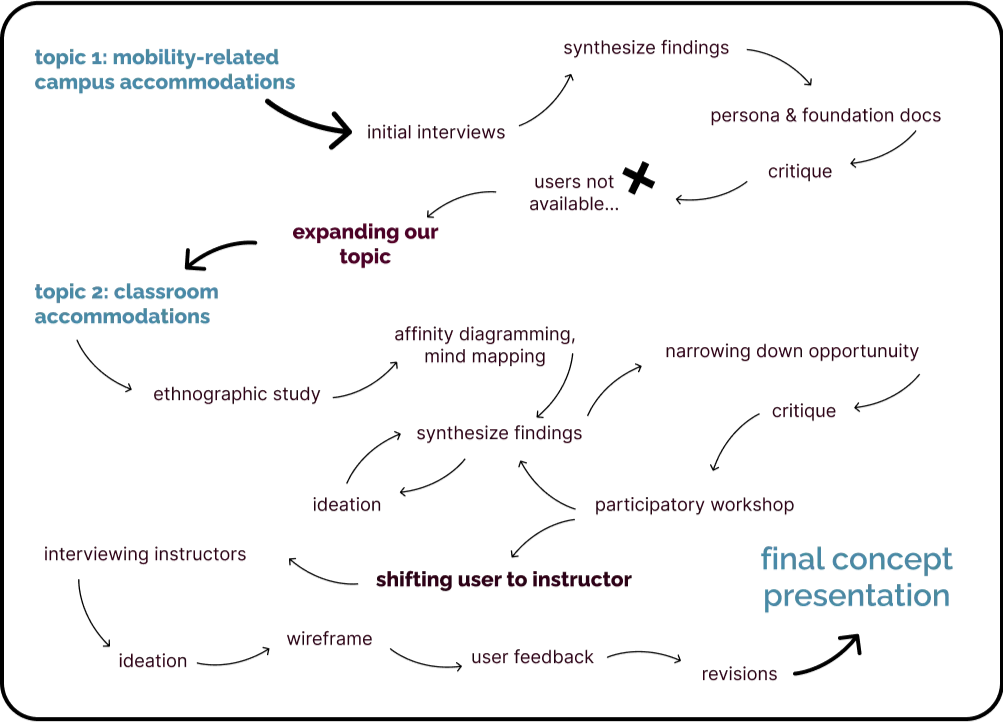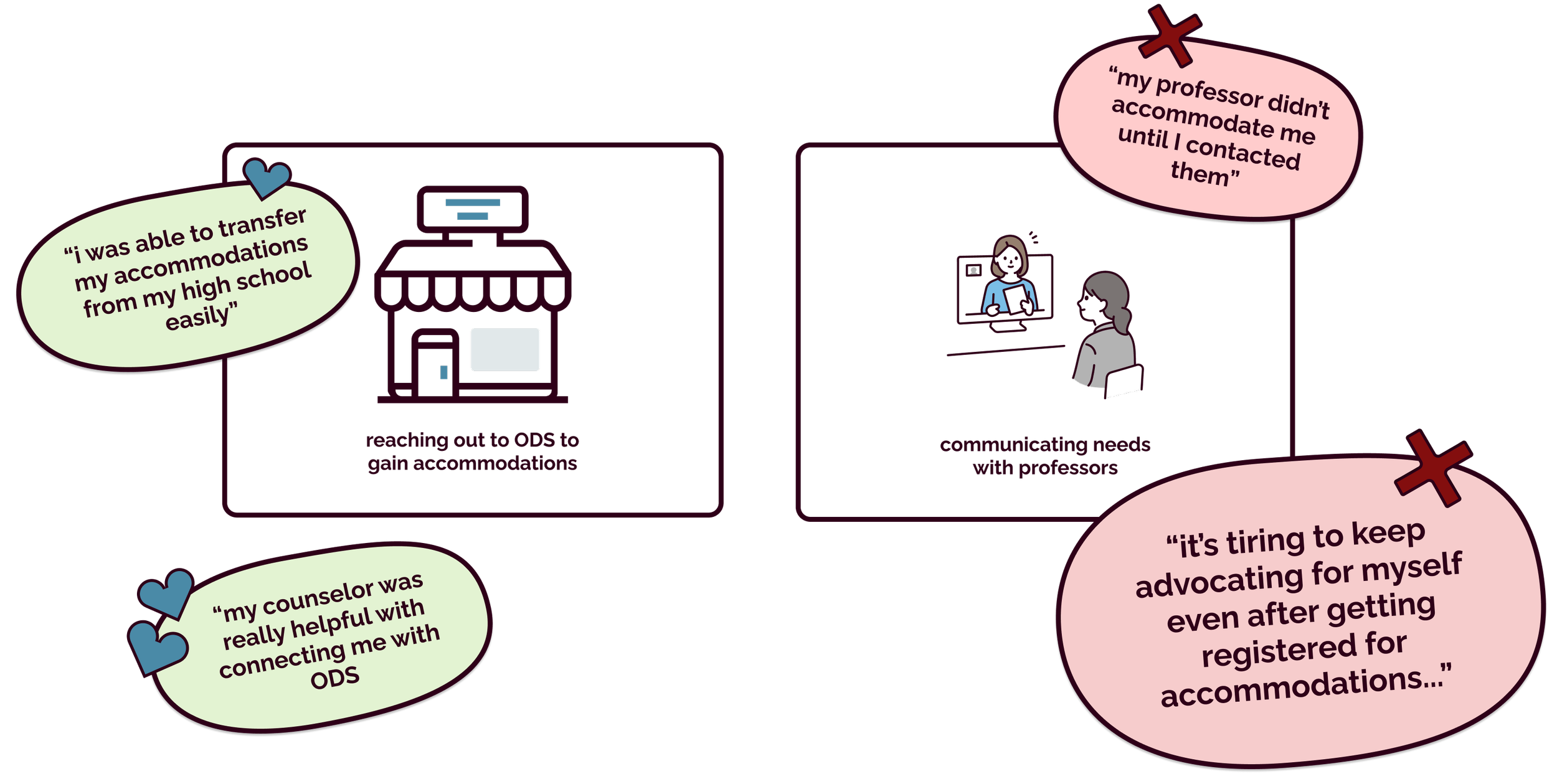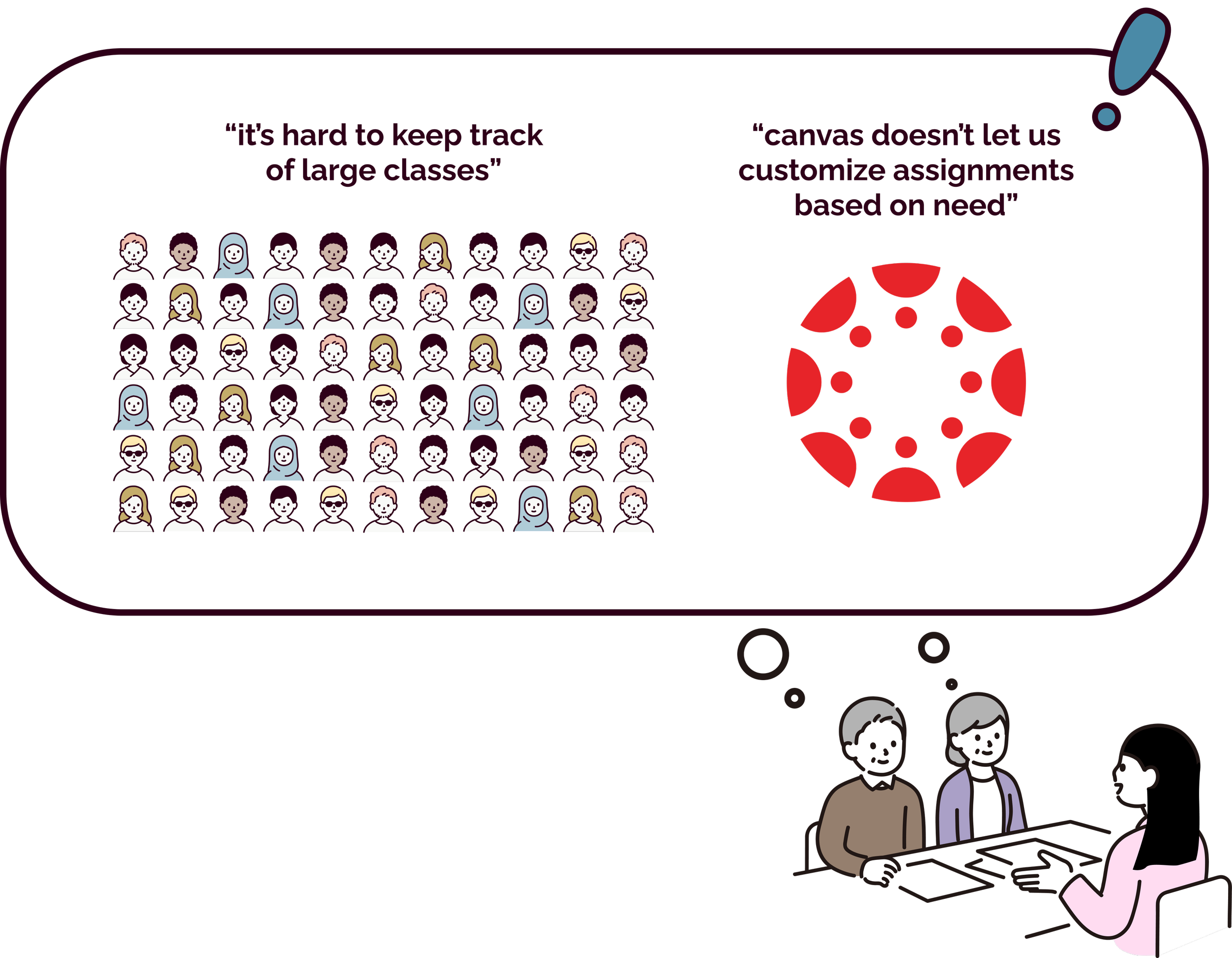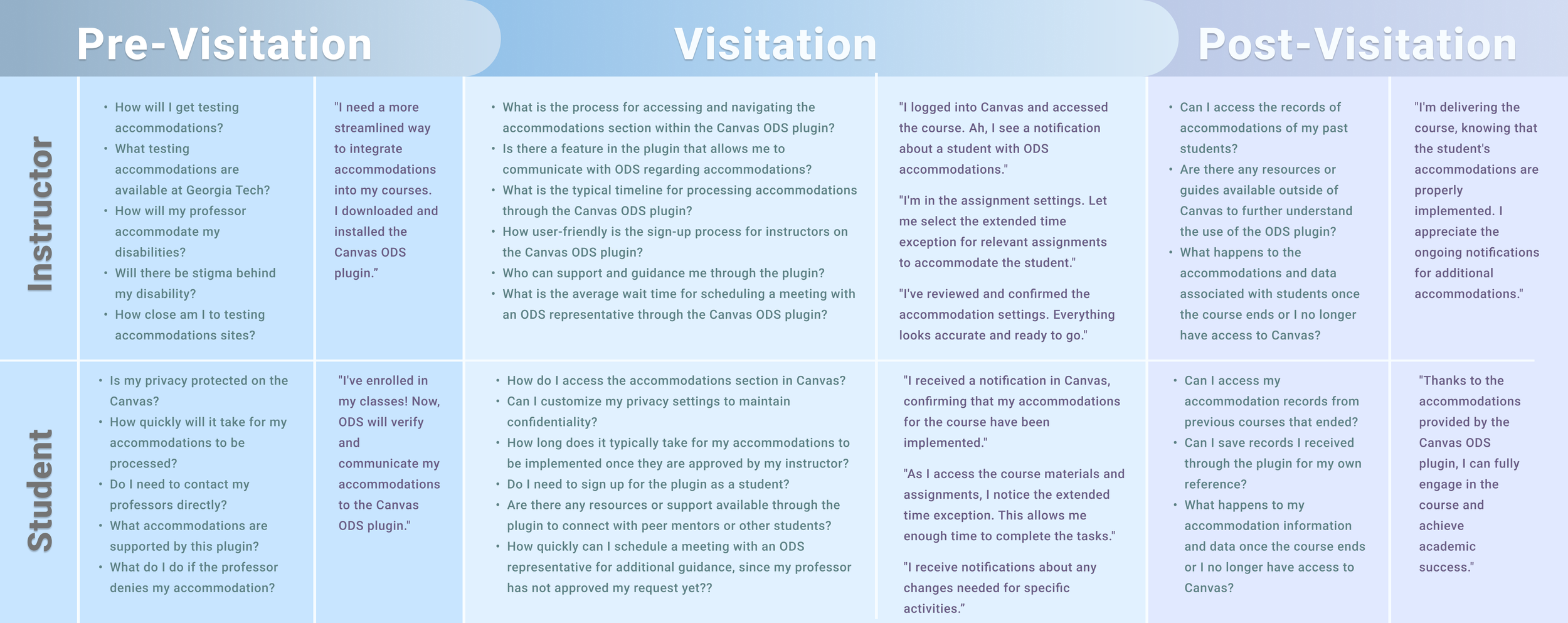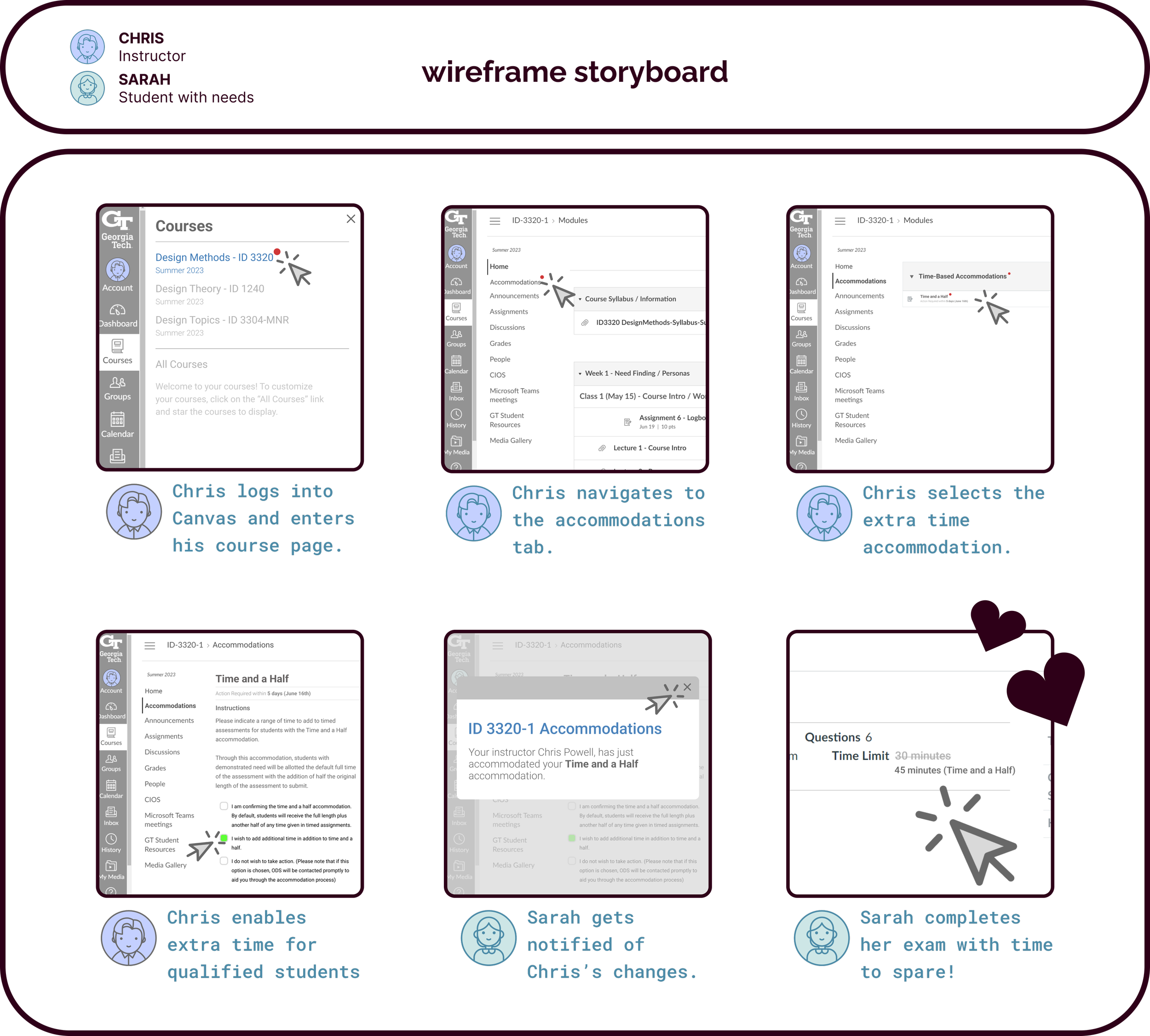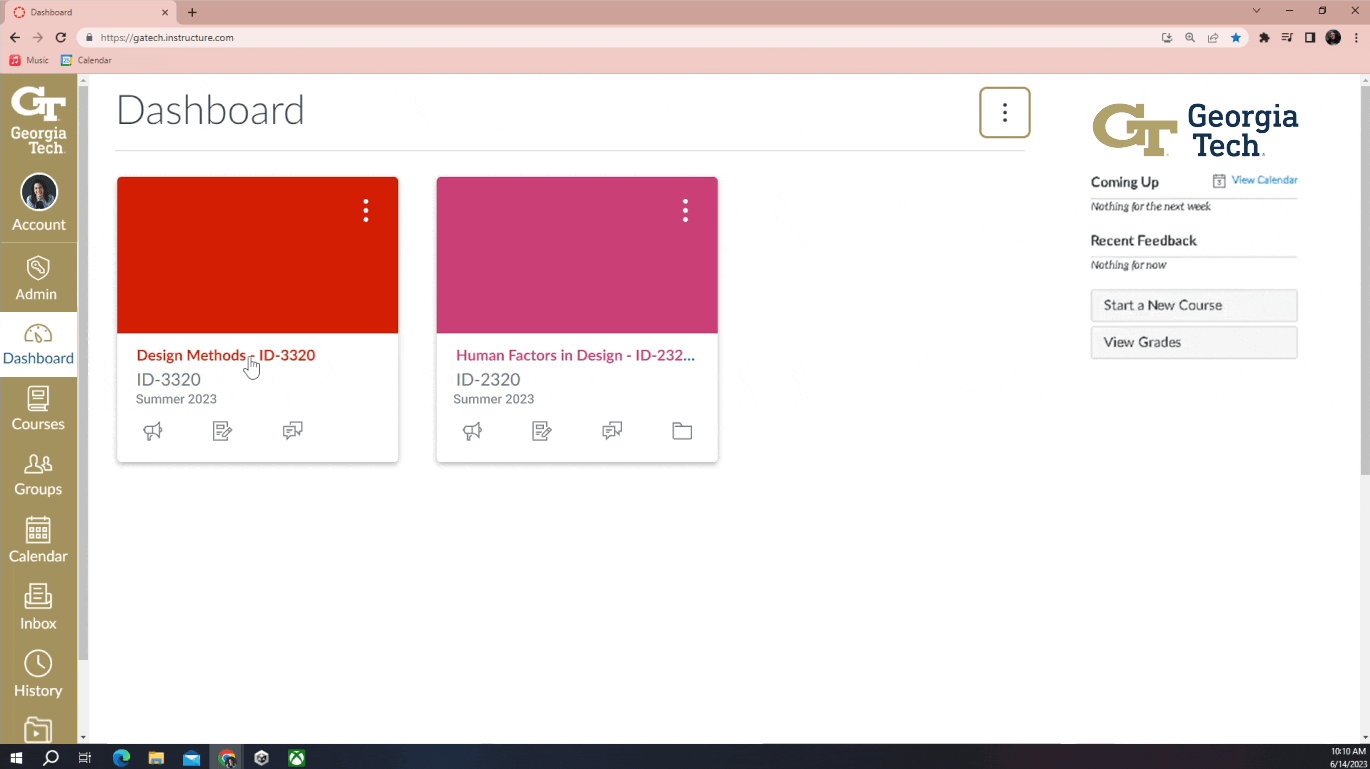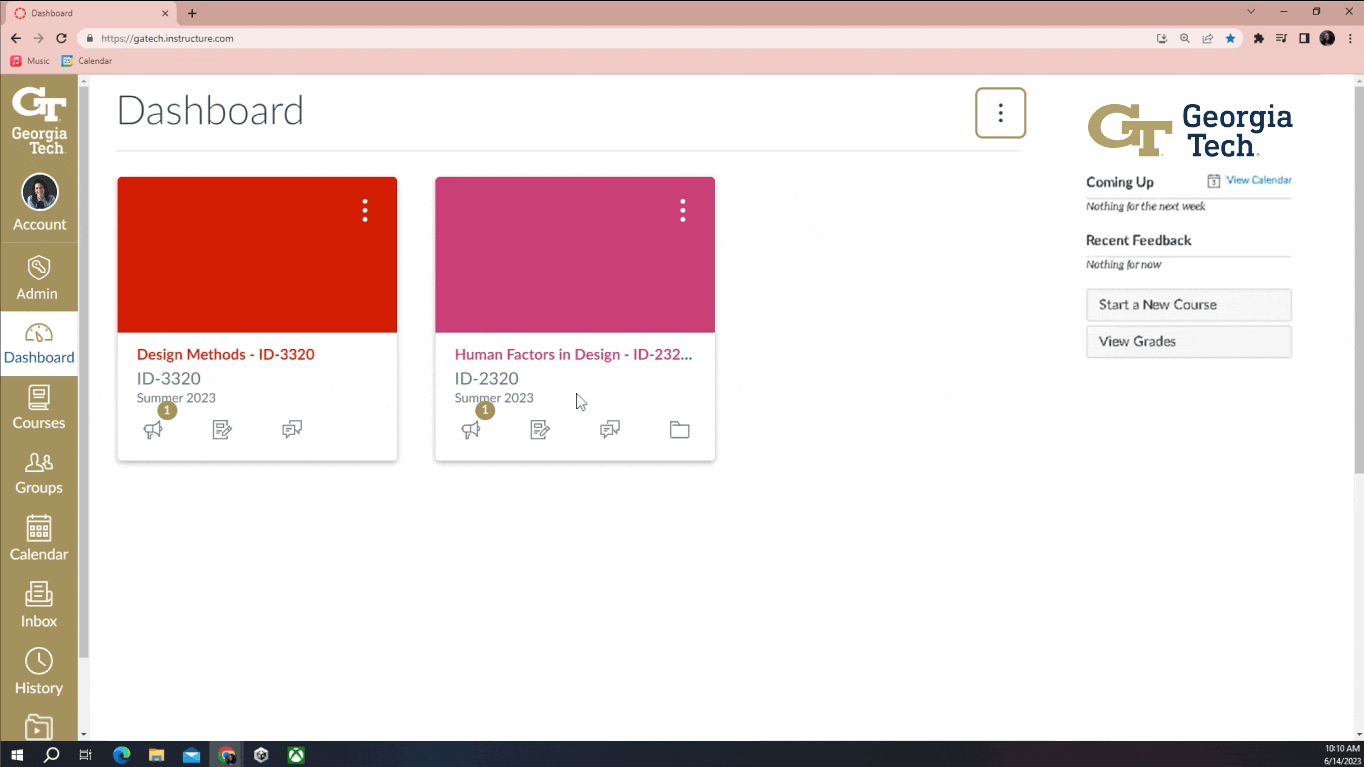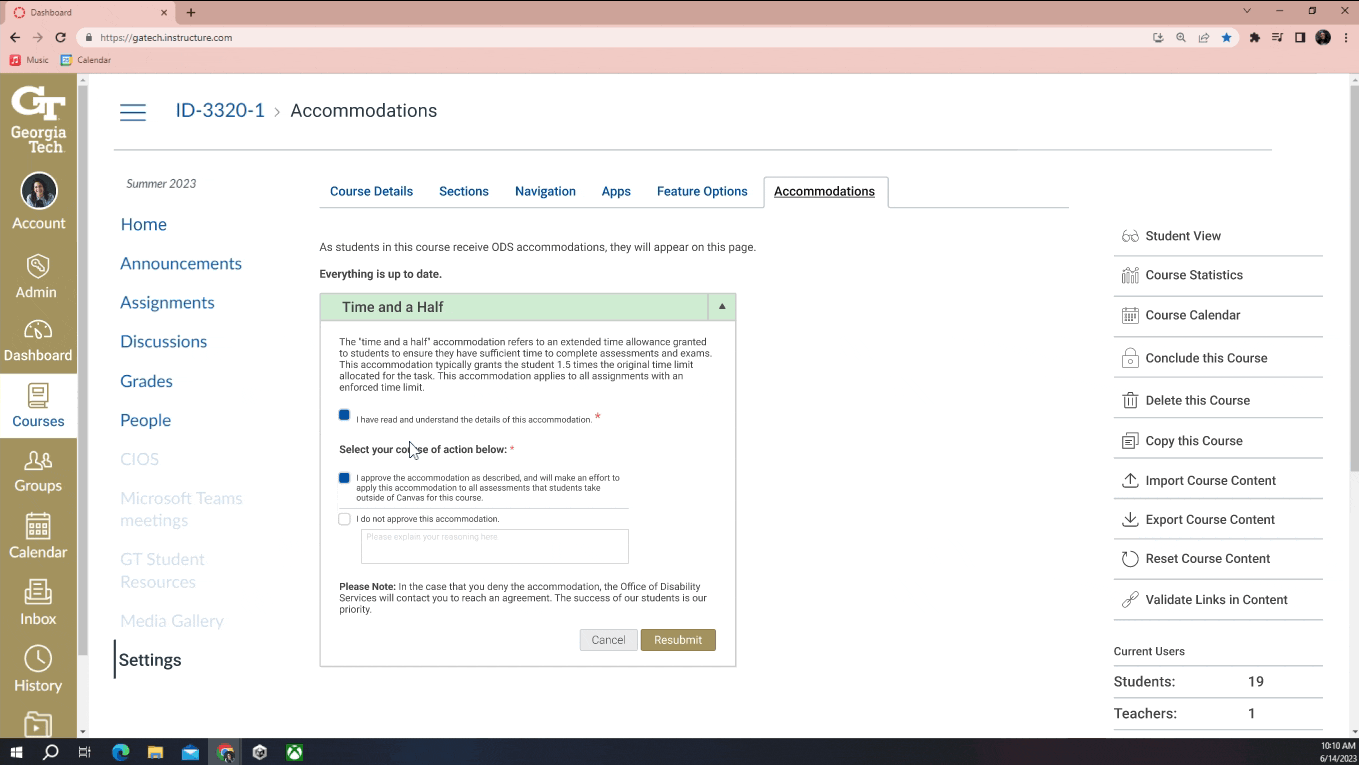Canvas Student ⊹ Integrating accommodations into course planning
I designed a plugin to improve the accommodations approval process in schools.
Role: Researcher + UX Designer
Team: 2 designers
Outcome: Learned to pinpoint opportunities from a broad problem to create a feasible and actionable solution backed by research and institutional needs.
Timeline: 2 month intensive (Georgia Tech research study)
Canvas is a popular LMS (Learning management system) that facilitates an online learning environment for students and instructors. My team designed a plugin that seamlessly integrates accommodations into instructors' course planning. Integrating accommodations into the educational system not only ensures equitable access for all students but also helps schools maintain compliance with legal and ethical standards.
My responsibilities
Primary & secondary research
User interviews
Research plan and methods
Service flows
My deliverables
Foundation documents
Persona mapping
Ethnographic study
Participatory workshop
Journey frameworks
Final concept presentation
Final Presentation.
We presented our final prototype in the style of a formal announcement to students and faculty.
A study in shifting requirements.
We were initially allowed free rein to decide on our research topic. We first decided to target the physical barriers that disabled students face on campus. With limited time, we iterated on learnings to pivot to a light but impactful solution to improve the classroom accommodations process for both students and instructors.
-
Our team's solution seamlessly integrates into the existing architecture of Canvas. No need to download any additional apps!
-
Our solution supports and amplifies the Diversity, Equity, and Inclusion (DEI) Initiatives of both Canvas and the Georgia Institute of Technology. It also systematically catches any biases in our school’s accommodations process.
-
The Individuals with Disabilities Education Act (IDEA) and Section 504 of the Rehabilitation Act of 1973 require schools to provide reasonable accommodations to disabled students.
We found various barriers to instructors’ abilities to honor these requirements that we hope to target through our solution.
Our initial research iteration led us to shift away from physical disorders to invisible ones.
When we presented these topics in class, the critique we received was to be careful moving forward, as these issues may not be feasible for our project. We decided to pivot to digital solutions over physical ones to limit scope.
What our community wants.
A common theme in our artifacts: our participants were feeling bogged down by bureaucracy in their journey of requesting accommodations for transit, aid, healthcare and in the classroom.
I mapped out possible ideas.
Ethnographic studies and affinity diagrams led us to further hone in on a viable opportunity area.
Our choice: building out a classroom accommodations solution.
-
Lack of matured accommodations approval process (we proceeded with this)
Uncomfortable seating arrangements for individuals with mobility limitations
Need for more ramps and better desk spacing
Lecture halls not adequately designed for accessibility
-
Limited availability of drivers
Small and uncomfortable vans, some with faulty air conditioning
Back-to-back rides and scheduling difficulties
-
Referrals from care services instead of comprehensive assistance
Limited choice in selecting doctors and lack of integration with specialists
-
Limited availability of drivers
Small and uncomfortable vans, some with faulty air conditioning
Back-to-back rides and scheduling difficulties
Inconsistent and delayed para-transit service
People occupying accessible seats on buses
Expensive and limited parking options
Difficulty unloading from accessible spots in street parking
“How might colleges enhance digital accommodation systems to serve students and simplify planning for faculty?”
We interviewed more students.
We asked them about their experience with:
Requesting disability accommodations from the Office of Disability Services (ODS)
The process of communicating needs to their professors.
The results told us we were almost on the right track.
We previously thought that students had a hard time getting accommodations in the first place. But we quickly found that participants had to contact each of their professors, and some of their instructors weren’t honoring their documented needs.
We realized that we needed to ask professors about their experience with student accommodations.
Instructors can’t keep up with each individual students’ needs.
This surprised us the most. Professors didn’t have a way to automate their digital assignments and assessments to fit accessibility needs of their students. So, it became difficult to keep track of multiple requests. When you consider that teachers and professors often teach hundreds of students a day, it’s no wonder that things get lost in translation.
Shouldn’t this be a built-in feature?
User Journeys
In this flow, a student’s accommodation status automatically pulls into Canvas when they are registered for the course. At that point, the instructor can approve and configure relevant accommodations to suit the student’s needs.
This flow completely cuts out the back and forth communications between student and instructor.
Reducing loads on all parties involved.
Currently, there is no way for instructors to customize assignments for specific students. Through this plugin, when professors have a student with a need, they can approve the accommodation to automatically integrate into the student’s coursework.
This flow completely cuts out the back and forth communications between student and instructor.
Streamlining accommodations.
Through our current solution, students do not have to take any action after getting approval for their needs. ODS, the Office of Disability Services, integrates directly with Canvas. Instructors only need to approve accommodations, which will automatically update due dates or testing details accordingly, depending on the circumstance.
We drafted simple prototypes for initial MVP.
What’s next for Canvas Accommodations?
While my team’s solution is a start at improving the accommodations process for students and instructors, there is a long way to go to improve the digital accommodations process and inclusivity of teaching apps.
Future Steps:
Design more intuitive site navigation and a more eye-friendly notification system throughout the app
Integrate these features into mobile support
Implement more user flows to show how the plugin would handle different accommodations that we’d previously explored. A few examples:
Location-based accommodations
Transcriptions from uploaded lectures
Synchronous test updates to alternate locations
Takeaways:
While our research was so full of depth, the final product was very simple in nature. Creating a feature that professors can use to customize coursework for students with needs is a simple solution but one that can go far to help students succeed in class.
